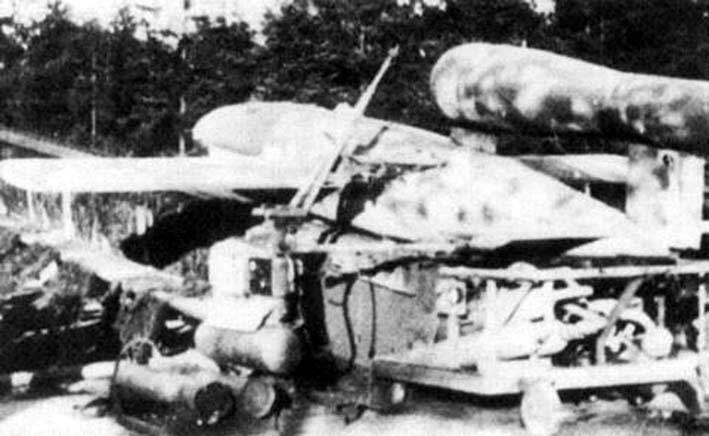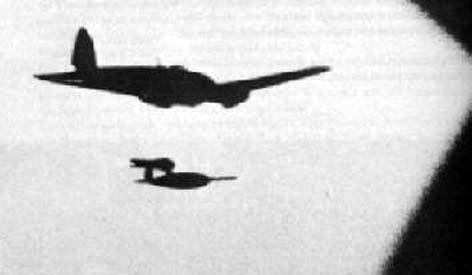|
A "stand off" launch from a He 111
H-22
|
(Images from Bert Hartmann) |
In 1934 Dr P Schmidt suggested that his pulsejet
engine(which Argus developed) could be used to power a "aerial torpedo".
Robert Lusser designed and developed this idea at Fieseler using the Argus
As 014 pulsejet, in 1941 Fieseler were given the go a head for the development
and production of this simple and cheap to make pilotless aeroplane, now
called the Fi 103 V1. The aircraft was fitted with a simple guidance system
using a gyroscope for direction / attitude and a distance recorder driven
by a small propellor on the nose, at a preset distance the fuel was cut
off the aircraft would than fall to the ground and explode, it was deployed
against the British Isles from mid 1944. The problem with all this was that
a pulsejet needs an appreciable speed to work, so conspicuous steam powered
launch ramps had to be made, which were very vulnerable to air attacks.
To solve this difficulty the Heinkel He 111 was modified (H 22) to launch
the Fi 103 from the air in what is now called "stand off". Other developments
were the "Reichenberg" Piloted Fi
103, and the American copy of 1944/45 the Republic
JB-2 "Thunderbug" or "Loon" |



